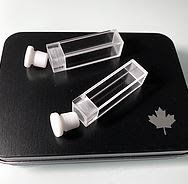Acrylic or Poly(methyl methacrylate)
microspheres are other names for PMMA microspheres. Methyl methacrylate is a
synthetic resin that is converted into PMMA, an ester of methacrylic acid
(CH2=C[CH3]CO2H). PMMA resin has been utilized extensively ever since it was
originally developed and marketed in the 1930s thanks to a number of very
desirable technical characteristics. Currently, Plexiglas, Lucite, and Perspex
are frequently used as trade names when selling acrylic polymers. PMMA polymer
has replaced glass as the material of choice in goods including shatterproof
windows, skylights, illuminated signs, and aircraft canopies due to its optical
qualities and durability that are comparable to glass. When high strength is
not required, PMMA resin is also a cost-effective substitute for polycarbonate
(PC).
%20Microspheres.jpg) |
| Poly(Methyl Methacrylate) Microspheres |
PMMA plastic is completely recyclable, and some varieties have received approval for use in food and medicine. There are no heavy metals or hazardous substances in the material that could harm the environment or pose health problems. Acrylic burns without emitting any corrosive or poisonous fumes, which complies with international standards. PMMA microspheres are spherical designed particles made of acrylic resin with precise technical parameters of controlled shape and size of each particle. They are also frequently referred to as PMMA beads, microbeads, spheres, or acrylic balls. When an application calls for extraordinary optical clarity that rivals that of glass along with the high durability and strength of plastic, precision PMMA microspheres are the material of choice. Go ahead! And claim the incredible benefits and advantages of the unrivaled non-functionalized or carboxyl polystyrene microparticles and poly(Methyl Methacrylate)microspheres.





